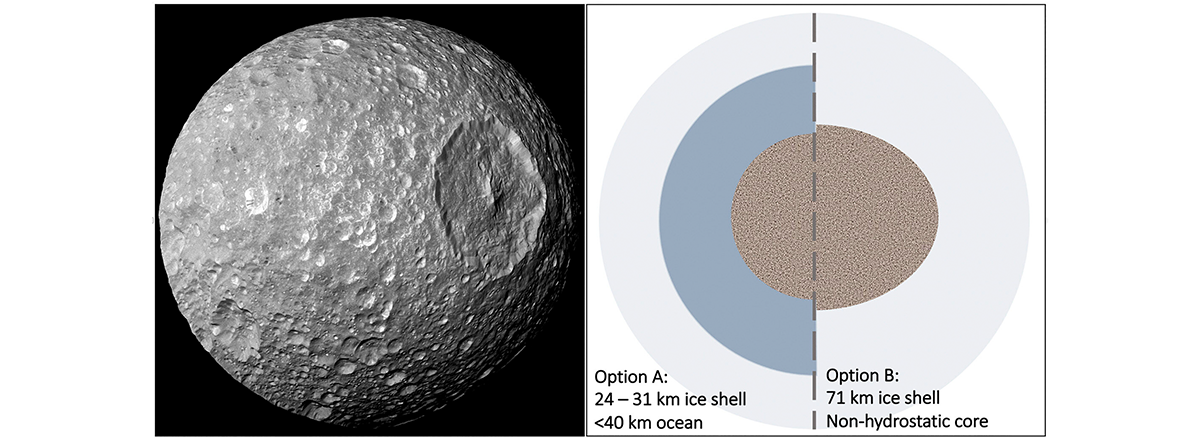Saturn's Moon Mimas May Be a Stealth Ocean World
Recent numerical simulations of Herschel's crater on the satellite determined that the basin structure and lack of tectonics on Mimas were compatible with thinning ice shell and a geologically young ocean.

Saturn's smallest satellite Mimas is believed to generate just enough heat to sustain a liquid internal ocean beneath its icy shell.
Mimas has a diameter of only 396 km and is the smallest satellite of Saturn with a round shape. Its surface is covered with water ice and riddled with craters, the most famous of which is dubbed Herschel.
Recent numerical simulations of Herschel's crater on the satellite determined that the basin structure and lack of tectonics on Mimas were compatible with thinning ice shell and a geologically young ocean.
In addition, the models showed that the ice shell of Mimas had to be at least 55 km thick at the time of the Herschel-forming impact. However, modern observations and models of Mimas limit the present-day ice shell thickness to less than 30 km thick. Herschel could not have formed in an ice shell that thick without completely destroying it.
These results imply that the ocean of Mimas must have been warming and expanding since the crater formed, and its ice shell has been thinning since Herschel formed.
If scientists can prove that there is an ocean beneath the icy surface of Mimas, the satellite would represent "a new class of small, 'stealth' ocean worlds with surfaces that do not betray the ocean's existence.

